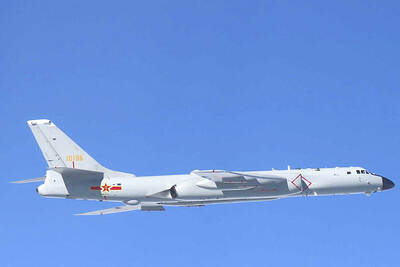The Spanish government has put itself on collision course with the national press with the announcement that it wants to ban adverts offering sexual services from their classified sections.
The explicit adverts, which fill at least a page in most of Spain’s dailies, are worth 40 million euros (US$52 million) a year to the struggling newspaper industry.
Spanish President Jose Luis Rodriguez Zapatero made the announcement during this week’s state of the nation speech, saying it was part of a strategy to fight people trafficking and sexual exploitation that is rife in the country.
“As long as these advertisements exist, they contribute to the idea of this activity as normal,” he said.
The Association of Spanish Newspaper Editors responded by saying that the logical policy would be for the government to make prostitution illegal.
“If it was illegal, then newspapers wouldn’t carry the ads,” a spokesman said.
If the ads are banned, newspapers will want to be compensated and, worryingly for Zapatero, El Pais, a staunch supporter of his socialist party, is the paper that earns the most from this form of advertising. With its left-liberal sensibilities and readership profile, El Pais is the Spanish paper that most resembles the Guardian, yet it earns 5 million euros a year from advertising prostitution.
Yolanda Besteiro of the Progressive Women’s Federation was scathing about what she regards as the newspaper’s hypocrisy.
“No media outlet can proclaim itself a defender of human rights when it publishes this kind of advertising, which makes them directly complicit in this type of slavery,” she said.
The most openly religious daily, ABC, also runs the ads. El Publico is the only national that does not run them as a matter of policy.
Spain is the only European country where the “quality” press carries adverts for sex. With the migration of most classified advertising to the Internet, prostitution now accounts for 60 percent of the Spanish classified ad market.
Prostitution is big business in Spain, worth an estimated 18 billion euros a year. There are about 200,000 sex workers in the country, nearly all of them immigrants, many of them illegal. Prostitutes are a common sight in cities and it is impossible to go far along any main road before finding an oddly named “alternate club,” rural brothels that can house as many as 100 women.
Most of the newspaper ads are not placed by individual women, but by the mafias — largely from Romania, Nigeria and various Latin American countries — who exploit them.
Proof of this emerged this month when police broke up a prostitution network in Madrid after following up ads in various papers. The women were being forced to give half their earnings to pimps and much of the rest went on paying for their lodgings, leaving them “in a state of near slavery,” police said.

PARLIAMENT CHAOS: Police forcibly removed Brazilian Deputy Glauber Braga after he called the legislation part of a ‘coup offensive’ and occupied the speaker’s chair Brazil’s lower house of Congress early yesterday approved a bill that could slash former Brazilian president Jair Bolsonaro’s prison sentence for plotting a coup, after efforts by a lawmaker to disrupt the proceedings sparked chaos in parliament. Bolsonaro has been serving a 27-year term since last month after his conviction for a scheme to stop Brazilian President Luiz Inacio Lula da Silva from taking office after the 2022 election. Lawmakers had been discussing a bill that would significantly reduce sentences for several crimes, including attempting a coup d’etat — opening up the prospect that Bolsonaro, 70, could have his sentence cut to

China yesterday held a low-key memorial ceremony for the 1937 Nanjing Massacre, with Chinese President Xi Jinping (習近平) not attending, despite a diplomatic crisis between Beijing and Tokyo over Taiwan. Beijing has raged at Tokyo since Japanese Prime Minister Sanae Takaichi last month said that a hypothetical Chinese attack on Taiwan could trigger a military response from Japan. China and Japan have long sparred over their painful history. China consistently reminds its people of the 1937 Nanjing Massacre, in which it says Japanese troops killed 300,000 people in what was then its capital. A post-World War II Allied tribunal put the death toll

A passerby could hear the cacophony from miles away in the Argentine capital, the unmistakable sound of 2,397 dogs barking — and breaking the unofficial world record for the largest-ever gathering of golden retrievers. Excitement pulsed through Bosques de Palermo, a sprawling park in Buenos Aires, as golden retriever-owners from all over Argentina transformed the park’s grassy expanse into a sea of bright yellow fur. Dog owners of all ages, their clothes covered in dog hair and stained with slobber, plopped down on picnic blankets with their beloved goldens to take in the surreal sight of so many other, exceptionally similar-looking ones.

‘UNWAVERING ALLIANCE’: The US Department of State said that China’s actions during military drills with Russia were not conducive to regional peace and stability The US on Tuesday criticized China over alleged radar deployments against Japanese military aircraft during a training exercise last week, while Tokyo and Seoul yesterday scrambled jets after Chinese and Russian military aircraft conducted joint patrols near the two countries. The incidents came after Japanese Prime Minister Sanae Takaichi triggered a dispute with Beijing last month with her remarks on how Tokyo might react to a hypothetical Chinese attack on Taiwan. “China’s actions are not conducive to regional peace and stability,” a US Department of State spokesperson said late on Tuesday, referring to the radar incident. “The US-Japan alliance is stronger and more